-
All Products
- Power Tools
- Air Compressors
- Air Tools & Accessories
- E-Bikes, Tools & Accessories
- Camping & Caravanning
- Cast Iron & Steel Stoves & Accessories
- Cleaning
- Clothing & Footwear
- Construction
- Drill & Screwdriver Bits
- Electrical & Electronic
- Engines, Electric Motors
- Fans, Air Conditioners & Ventilation
- Garage Equipment
- Gardening & Outdoor
- Generators
- Hand Tools
- Health & Safety
- Heaters - Electric, Gas, Diesel
- Air Compressors
- Wood Burning Stoves
-
Garage Equipment
Workshop Cranes & Engine Stands
Vehicle Battery Chargers
Engine Starters/Chargers
Jump Starts
Motorcycle Lifts, Stands & Dollys
Air Compressors
Grease Guns, Cartridges & Dispensers
Trolley Jacks & Car Jacks
-
Tool Chests & Storage
Shelving and Racking
All Tool Chests and Cabinets
Modular Workshop Systems
Clarke Mechanics' Tool Chest Range
Clarke Professional Tool Chests
Clarke Premium Tool Chests
Clarke Heavy Duty Tool Chests
Clarke Heavy Duty+ Tool Chests
- Fans & Air Conditioners
-
Wood Working
Table Saws & Workshop Saws
Compound Mitre Saws & Mitre Saws
Power Saw Stands
Bandsaws
Bench Belt & Disc Sanders
Planer Thicknessers
Dust Extractors
Dust Extractor Hoses & Accessories
- Generators
- Water Pumps
-
Power Tools
Cordless Drills & Drill/Drivers
Impact Wrenches
Impact Drivers
Mains Power Drills (Non SDS)
Mains Powered SDS, SDS+ and SDS MAX Drills
Cordless SDS & SDS+ Drills
Cordless Screwdrivers
Magnetic Drilling Systems
-
Hand Tools
Tool Kit Sets
Allen, Hex, Torx and Star Key Sets
Allen, Hex, Torx and Star Keys - Individual
Chisels & Punches
Spring Clamps
Files
Glass Cutters
Hammers
-
Welding
MIG Welders
Arc/Tig Welders
Arc Welders
Plasma Cutters
Spot Welders
Petrol & Diesel Driven Welders
Welding Headshields & Goggles
Welding PPE
- Pressure Washers
Welding Buyer's Guide

An Expert's Advice Guide to Welders, Welding Equipment and Welding Techniques
Machine Mart are one of Britain’s biggest suppliers of welding equipment, we are sure you will find this guide useful.
There are several methods for joining two pieces of metal together, but welding offers one of the strongest and most permanent. To weld two pieces of metal the edges of both must be melted, additional molten material introduced and then they are allowed to cool together as one. Obviously very high temperatures are required to melt the steel.
Traditionally, for mild steel, this has been achieved using an Oxy-Acetylene (Gas) welding torch or an electric arc to melt the metals to be joined. However gas welding has the drawbacks associated with storing and handling large cylinders of flammable gases.
Arc welding can be a tricky art to master, moving the welding rod or stick along the weld at the correct speed, whilst feeding it in towards the work piece as the rod melts, but being careful not to touch the rod on the metal and cause the arc to cease! Despite all this there are many people who have the necessary skill and use this method of welding for agricultural repair and maintenance and similar applications. The welding current (Amps) available governs the thickness of metal which may be welded.
This section will provide you with a better understanding of the types of welders available, how each one performs and the degree of welding skill required to operate each. In addition, we’ll offer examples of specific applications best suited to each process.
Matching your needs and welding skills with a specific process is critical before moving on to discuss specific welder model options.

MIG Welding
- Easiest process to learn
- High welding speeds possible
- Better control on thinner metals
- Cleaner welds possible with no slag to clean
- Same equipment can be used for Flux-Cored Welding
Flux-Cored No Gas MIG Welding
- No Gas required saving costs
- All the features above on the MIG DIY Range.
- Easy to use on both Gas and No Gas
- Ideal for outdoor use as there is less disruption from wind blowing the shield gas
Arc/Stick Welding
- Very Flexible and versatile when welding in remote places.
- Works well on thicker materials with a large product range on offer
- Fewer Moving Parts
- Difficult to keep a steady hand but this is soon overcome with practice.
TIG Welding
- Provides highest quality, precise welds
- Highly aesthetic weld beads
- Allows the best control over the welding process.
- Perhaps the most tricky to do but is worth the effort with the final results.
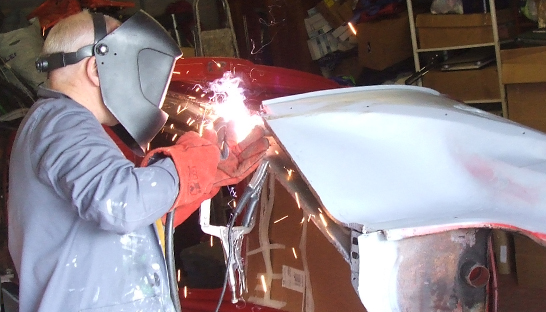
Possible projects and associated metal thickness
The list below gives some typical material thicknesses to consider when carrying out welding tasks. Having an idea of what you are planning to weld will help choose the correct welder size:
Gates (3mm to 5mm)
Trailer frames and fencing (6mm to 8mm)
Farm Machinery (8mm to 9.5mm)
Thick structural components (10mm)
Bicycles, lawnmowers or tube frames (2mm)
Boats, cars and motorcycles (1.5mm to 3mm)
Trailers (1.5mm to 3mm)
General to heavy repair (5mm to 7mm)

Average Current vs Metal Thickness
| Maximum Amps | 90 amp | 110 amp | 130 amp | 150 amp | 180 amp |
| Max Steel Thickness (butt weld) | 2.0mm | 2.5mm | 3mm | 4mm | 5mm |
| Max Steel Thickness (with V and root gap) | 3.0mm | 3.8mm | 4.5mm | 6mm | 7.5mm |
Arc Welding
This can be a tricky art to master especially moving the welding rod or stick along the weld maintaining a 2-4 mm gap at the correct speed whilst simultaneously feeding it in towards the work piece as the rod melts. You also need to be careful not to touch the rod on to the metal causing the arc to cease! Despite all this there are many people who have the necessary skill and prefer this method of welding for agricultural repair and maintenance and similar applications. The welding current (Amps) available governs the thickness of metal which may be welded
Machine Mart sells two types of arc welding machine.
Both these types of welder use a FLUX COATED WELDING ELECTROD “Stick” or “Rod” to supply the additional filler metal to the weld. These Rods are coated with a flux compound which melts during the welding process to prevent oxidation of the base and filler metals.
The AC (Alternating Current) machines start with the entry level “Easy-Arc” range with machines providing from 30 to 185 Amps. This makes these the ideal choice for the DIY’er or home enthusiast. And the Industrial range, which, as the name suggests, is designed with the professional automotive and maintenance user in mind. These machines cover the range of 40 to 400 Amps
MIG Welding
A more recent innovation in the world of welding is the easy to use MIG welder.
Machine Mart has a wide range of these machines to suit the occasional amateur user, the busy enthusiast and right through to the professional automotive and industrial welder.
MIG welders use an envelope of inert gas to protect the base and filler materials from oxidization during the welding process. The filler material comes in the form of a thin wire which is fed at a constant rate into the weld. The wire feed rate and current (ampage) are both varied to suit the thickness of the metal being welded.
For basic DIY work where the machine will not be used for long periods or required to weld particularly thick material Machine Mart sells a DIY range which covers from 24 to 100 Amps. The Clarke Weld MIG Turbo range machines have the advantage of a cooling fan, allowing longer periods of use making these machines suitable for the professional user. These machines cover from 30 to 400 Amps Industrial Range. With the addition of appropriate wire and gas most of these welders may also be used to weld Aluminium or Stainless Steel.
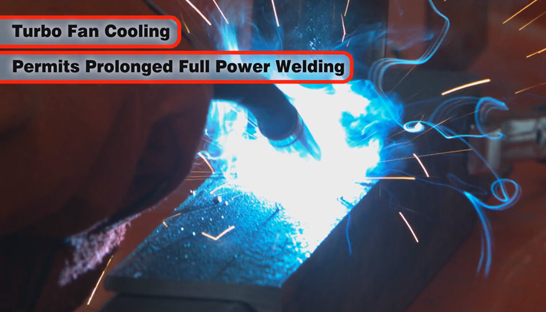
No Gas MIG Welding
Machine Mart also sells the Clarke Weld dual purpose Mig welder range, which can be used without gas; by using a flux cored welding wire. The majority of these machines can also be converted to use gas and is a blend of using Mig Welding and Arc. This is where the process is the same as Mig but after the weld has cooled down there is a covering left over the weld from the flux. This is simply brushed off with a wire brush. No Gas Wire.
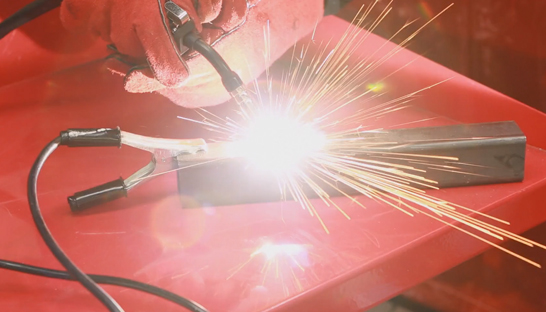
ARC/TIG Welding
TIG Welding / Gas Tungsten Arc Welding.
TIG welding is an arc welding process that uses a non-consumable tungsten electrode to produce the weld with the addition of a filler metal. The weld area is protected from atmospheric contamination by a shielding gas (usually argon). A constant-current welding power supply produces energy that is conducted across the arc through a centralized beam of highly ionized gas and metal vapours known as plasma.
TIG welding is most commonly used to weld thin sections of alloy steel, stainless steel and non-ferrous metals such as aluminium, magnesium, and copper alloys. The process grants the operator greater control over the weld than other welding processes. This allows for stronger, higher quality welds. TIG welding is comparatively more complex and difficult to master than other welding types, and is significantly slower. These can be with DC output or with a switchable output between AC/DC outputs.
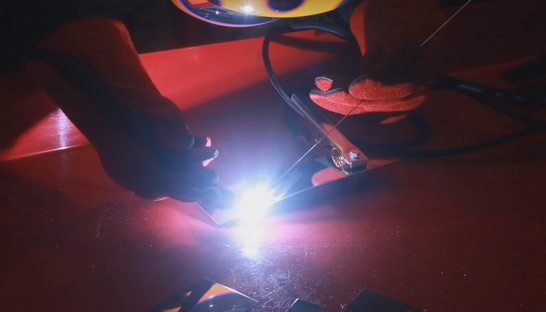
Electrical Power is not unlimited
The current range of welders use electrical power in varying different sizes. It is important to ensure this is taken into consideration when sizing the welder required ensuring you have enough power available to carry out your task. The higher the output welding current, the greater the input power you will require. e.g a Mig Welder, welding up to 135A may be connected to the 230volt mains supply with the 13A, 3 pin domestic plug. Welders with higher outputs, 150 amps and above typically will need connecting through an industrial socket through a suitably fused isolator or hard wired to a double poled isolator. These charts should give you an idea of what your typical power supply should need related to your welding requirements.
| Welder | Fuse Rating (All Models) |
| Clarke 110E MIG Welder | 13 Amps |
| Clarke MIG130EN Turbo No Gas/Gas MIG Welder | 13 Amps |
| Clarke 135TE Turbo MIG Welder | 13 Amps |
| Clarke 151TE Turbo MIG Welder | 15 Amps |
| Clarke MIG160EN Turbo No-Gas/Gas MIG Welder | 15 Amps |
Health & Safety When Welding
Safety in the workshop should always be a priority. Of course your own Safety is important, but welding can also affect visitors and other workers around you.
Electric welding produces an arc which is much brighter then the flame used in gas welding and also generates large quantities of both UVa and UVb radiation.
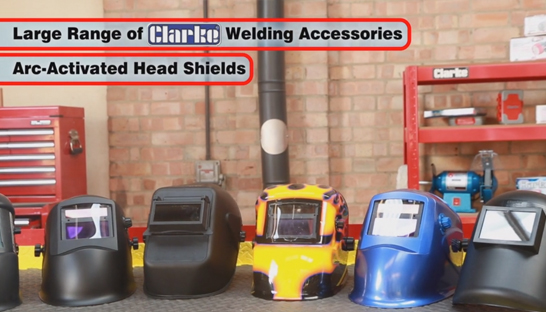
Care should be taken to ensure that no one looks directly at the arc without suitable eye protection. The helmet type head shields offer the best protection as they not only have the correct darkened glass welding lens and protect your face from the UV rays, thereby preventing an embarrassing sunburn type rash. Radiation may also be reflected by white walls, for example. Welding head shields should conform to BS 679, the lenses are graded indicating their darkness
| Lens Grade | Welder Power |
| 8 or 9 | Up to 100A |
| 10 or 11 | 100a to 300A |
| 12,13 or 14 | 300A plus |
It is also important to protect the rest of your skin not only from the UV, but also from splatters of molten metal. Overalls should be fire retardant and gloves and footwear made from leather offer the best protection.
Rings and other metallic jewellery should not be worn at these are a capable of creating an arc with the welder.
Your work area should be kept clear and you should avoid trailing cables across the floor, where possible.
The floor should also be dry- you are using high current electricity! For that matter, avoid touching the electrode too!
You shouldn’t weld near gas bottles, high pressure air lines or flammable materials and remember to allow time between cleaning the work piece and welding it, if you have used a flammable cleaner.
There should be good ventilation, to remove the fumes created when welding.
If welding is being carried out on electrical equipment, it should be turned off and disconnected to avoid damage.
Welders up to 130A may be connected to the mains supply with the 13A, 3 pin domestic plug supplied; larger machines should be connected using the appropriate industrial connector. You should always ensure that your electrical supply is adequate.

Clarke DIY MIG Welders
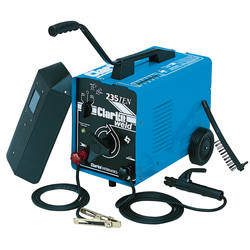
Arc Welders

Industrial/Automotive MIG Welders

Headshields & Eye Protection